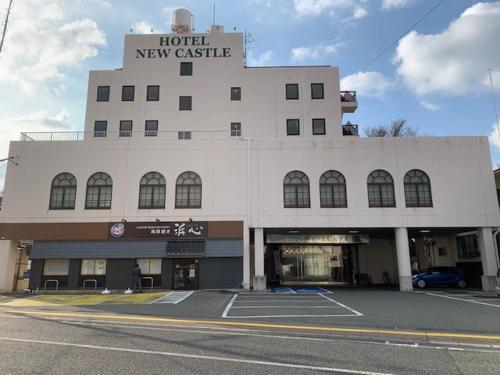Iwami Tatami-ga-ura
menuMenu
A breathtaking spot where you can observe precious geological strata formed by the uplift of a seabed approximately 16 million years ago.




Highlights
- Observe precious geological strata formed by the uplift of a seabed approximately 16 million years ago.
- The flat, wave-eroded rock surface known as "Senjōjiki"
- Countless shellfish and whale fossils
- Numerous round stones called nodules
- Rich in valuable geological heritage
Basic Information
- Address
- Kokubun-cho, Hamada City, Shimane Prefecture Search for tourist attractions in Shimane
- Access
- 25-minute walk from JR San'in Main Line Shimoku Station 15-minute walk from the "Senjōen-guchi" bus stop (江津方面行き bus bound for Etsu) accessible from JR Hamada Station Show route
- Op.Hours
- Open year-round
- Cld.Days
- None
- Fee
- Parking fee: ¥200 per vehicle
- INFO
- • On Sundays, a volunteer guide is stationed at the entrance, offering free guided tours. *9:00 AM - 3:00 PM (excluding July-August and December-February) • For safety reasons, "Megane-bashi" (spectacles bridge) has been closed to pedestrian traffic since January 17th, 2024. Please be advised.
Overview
Recommended nearby attractions
Ikumi Ginzan (Silver Mine)

A World Heritage site where a history spanning over 400 years intertwines with magnificent nature.
Iwami Ginzan World Heritage Center

The Iwami Ginzan World Heritage Center offers clear explanations of the history, culture, and natural environment of Iwami Ginzan using models, photos, and videos.
Tomogaura

Tomogaura, a component asset of the Shimane Silver Mine World Heritage site, boasts a history as a thriving port for silver shipments. It played a crucial role connecting the Silver Mine Road and the sea.
Ōmori Ginzan Important Preservation District for Groups of Traditional Buildings

A mining town of the Ikumi Silver Mine World Heritage site, where the townscape of the Edo period remains vividly. Experience a time-slip feeling in a quiet and tranquil atmosphere.
Ryūgenji Mabu of Iwami Ginzan Silver Mine

Experience the history of Iwami Ginzan Silver Mine and the harsh realities of mining work in the Edo period.
Ikumi Ginzan Kaido Onsenzu-Okidomari-michi

The Ikumi Ginzan Kaido Onsenzu-Okidomari-michi, a historically significant road leading to the silver mines, still charms visitors with its preserved stone-paved path.
Shimizu Daishi-ji Temple

A temple perched on a breathtaking spot overlooking the Sea of Japan, offering stunning views of Onsenzu Port—the gateway through which silver from the Iwami Ginzan silver mine was shipped worldwide. Famous for its beautiful sunsets, it's a popular spot for photography enthusiasts.
Hamada Castle Ruins

Hamada Castle Ruins are the remains of an Edo-period castle, now a beautifully maintained park. Explore the surviving stone walls and earthworks. From the former main keep, you'll enjoy breathtaking panoramic views of Hamada's harbor town.
Rakan-ji Temple and the Five Hundred Rakan Statues

The 500 Rakan statues are part of the Shimane Silver Mine World Heritage site. The sheer scale of 250 statues side-by-side is breathtaking!
Sandankyo Gorge

A premier sightseeing spot in Hiroshima Prefecture, offering spectacular natural beauty and gorge scenery.
Nearby Hotels
Kokuminsyukusya Senjoen

Hotel Route Inn Hamada Ekimae

Green Rich Hotel Hamada Ekimae Artificial hot spring Futamata Yunohana

Hotel Matsuo

Toyoko Inn Hamada-eki Kita-guchi

Shimane Hamada Washington Hotel Plaza

Hamada New Castle Hotel

Sangai Ryokan

